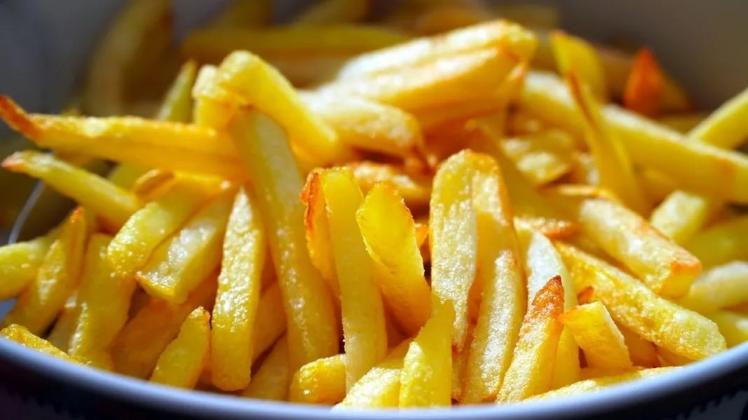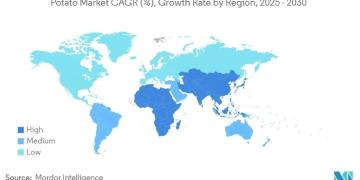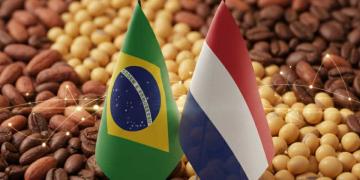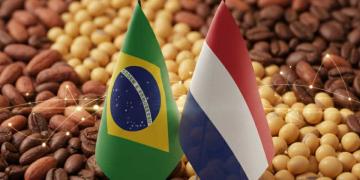China: Local expertise seeks to transform the potato chip industry
The power of potato processing: how China’s emerging industry could transform the world of potato chips and crisps

By Lukie Pieterse , Potato News Today
A team of Chinese scientists maps the current leading countries in processing and trade patterns, then highlights how China’s staple food policy, growing urban demand and stricter environmental regulations are driving its processors towards larger-scale, more automated and more sustainable operating models.
In a new review in the journal Foods, Chinese researchers Xiaoye Hu, Hong Jiang, Zixuan Liu, Mingjie Gao, Gang Liu, Shilong Tian, and Fankui Zeng analyze how potatoes are processed around the world and where China fits in. The team is based at the Lanzhou Institute of Chemical Physics and the University of the Chinese Academy of Sciences, along with colleagues from the State Key Laboratory of Efficient Utilization of Arid and Semi-Arid Farmland in North China (Chinese Academy of Agricultural Sciences) and the Research Institute of Agricultural Product Storage and Processing of the Gansu Academy of Agricultural Sciences.
Based on FAOSTAT, UN Comtrade, market research data and case studies from 11 major producing countries, they describe who is converting potatoes into which products, how money flows and what is needed to make the industry more sustainable.
For potato growers and processors in North America, Europe, Asia, Africa, and beyond, the message is clear: potato volume is no longer the deciding factor. Increasingly, the real competition lies in who controls the value-added processing chain and who can align potato chips, flakes, and starch with stricter expectations for quality, safety, and the environment.
Global processing has grown rapidly, but unevenly.
The analysis begins with a stark reminder that the global potato map has changed dramatically in the last half-century. Potato acreage in Poland has plummeted from approximately 2.8 million hectares in the early 1960s to less than 200,000 hectares today, while South Africa’s production has increased severalfold despite a modest increase in acreage.
At the same time, the processing sector has become an important economic engine:
- The global potato processing market was worth around US$41 billion in 2023 and could approach US$60 billion by 2031.
- Developed processing centers such as the United States, Canada, Germany, the Netherlands, France, and Belgium typically process between 60 and 80% of their potato production.
- In contrast, China processes around 15% of its potatoes and India around 7%, despite being the first and second largest global producers respectively.
This imbalance helps explain current trade flows. Countries with well-established processing sectors not only supply their own fast-food and retail markets but also dominate exports of frozen french fries, chips, flakes, and starch. Meanwhile, countries where potatoes are still mostly consumed fresh are typically net importers of processed products.
China’s late start and rapid recovery
Compared to North America and Western Europe, China’s modern potato processing sector developed relatively late. However, political support and rapidly evolving consumer habits are now driving rapid growth.
Key points of the review:
- In 2014, China’s Ministry of Agriculture and Rural Affairs formally listed potatoes as the country’s fourth staple food, alongside rice, wheat, and corn, indicating that potatoes are important for food security, not just as a side dish.
- More than two-thirds of China’s potatoes are still consumed fresh, but domestic demand for convenient products is rising rapidly, driven by fast-food chains, e-commerce and home freezers.
- A major milestone occurred in 2022, when China became a net exporter of frozen french fries for the first time, moving from being dependent on imports to becoming an emerging exporting player.
Only eight major potato chip manufacturers in China produced and sold approximately 1.27 million tons of potato chips in 2023. Beijing Kaida Hengye and SnowValley Food lead the domestic group, while multinationals such as McCain, Lamb Weston, Aviko, and Simplot operate major plants in the country.
Many of the most advanced processing lines, particularly those for precision cutting, drying, and fully automated potato chip production, are still imported, primarily from European suppliers. Chinese companies have begun installing their own highly automated lines, sometimes unmanned, but a gap remains in overall efficiency, consistency, and product quality compared to leading processors in Europe and North America.
How do the main processing countries compare?
Using case studies, the authors outline a comparative portrait of the main potato-processing countries:
- The United States and Canada: Both countries process more than 60% of their potato production, primarily frozen french fries and other frozen products. Extensive irrigation infrastructure, large contracts between producers and processors, and vertically integrated supply chains support a steady flow of raw materials to plants that supply domestic and export markets in Asia, Latin America, and other countries.
- Germany and the Netherlands are major players in the production of starch and specialty products. In Germany, processing accounts for approximately 70-80% of production, with a strong focus on starch and modified starches, along with processed foods ranging from potato chips to ready-to-eat meals. The Netherlands combines significant starch production with a prominent role in trade and processing for export.
- France, Belgium, and the United Kingdom: these countries have established themselves in the market for potato chips and other processed products, often meeting cross-border demand. A large portion of the potatoes from northern France go directly to Belgian potato chip factories, while the United Kingdom is a significant market for frozen potato chips.
- India and South Africa: Both countries have considerable production, but their processing rates are still relatively low. The potato chip sector in India is expanding from a low base, while South Africa shows strong growth in overall production but remains dependent on imports for some processed categories, especially in fast-food restaurants.
In these markets, the same multinationals – McCain, Lamb Weston, Simplot, Aviko, Farm Frites and others – repeatedly appear as dominant players, often partnering with local producers in long-term contracts and operating plants on several continents.
Where the value is: potato chips, crisps, flakes, and starch
The review devotes significant space to four main product families and their different market logics:
- French fries: Frozen french fries remain the flagship product of the global processing industry, closely linked to the expansion of fast food and home delivery. North America and Europe remain the main production hubs, but Chinese production is increasing rapidly as national fast-food brands and delivery platforms demand reliable, standardized french fries.
- Potato chips: Traditional potato chips continue to dominate globally, thanks to decades of progressive innovation in peeling, slicing, frying, seasoning, packaging, and grading technologies. Brand power is crucial in this area: international brands like Lay’s and Pringles continue to influence consumer expectations in many markets, including China, even as domestic brands move into the baked, low-oil, and healthier segments.
- Flakes and granules: Often less visible in retail, flakes, granules, and pellets play a crucial role in instant mashed potatoes, snacks, bakery products, and foodservice formats. The trade in these highly processed forms is concentrated in countries with a strong processing infrastructure, such as Germany, the Netherlands, and the United States.
- Starch: Potato starch is both a food ingredient and an industrial material. Germany and the Netherlands dominate starch exports, while the United States is a major importer, reflecting its widespread use in the food, paper, and other industries. In China, stricter environmental regulations have led to the consolidation of starch mills and accelerated the adoption of more advanced wastewater and by-product recovery systems.
As consumer tastes evolve, the authors see growth potential in healthier chips (baked, low in salt and oil), potato ingredients with higher protein content, and functional products that position potatoes within the broader trend of better nutrition.
What Porter’s Diamond Reveals About China’s Competitiveness
See moreWholesale potato pricesPotato storageAgricultural advertisingPest control productsAgricultural classifiedsPapasInternational potato pricesCrop insurancePotato price reportstableTo understand why China is lagging behind established processing leaders, despite its huge potato production and massive domestic market, the study applies Porter’s Diamond Model .
The analysis highlights both the advantages and the obstacles:
- Factor conditions: China has abundant arable land suitable for potatoes and rapidly improving agronomy in several key regions. However, there are shortcomings in specialized processing varieties, storage infrastructure tailored to processors’ needs, and fully automated plant equipment designed for local conditions.
- Demand conditions: Domestic demand for potato-based convenience foods, especially potato chips and fries, is strong among younger urban consumers. At the same time, per capita potato consumption is still below levels in some European countries, leaving room for further demand growth.
- Related and supporting industries: China’s machinery, packaging, and logistics sectors are generally highly developed, but specialized potato processing technology still relies heavily on imports. Local innovation in cutting, frying, drying, freezing, and control systems is emerging, but it is not yet on par with European suppliers.
- Strategy, structure, and rivalry of the firm: A mix of domestic and multinational players creates a competitive landscape that can drive improvement, but Chinese companies still need to strengthen brand building, marketing, and quality differentiation if they want to compete at the high end of global markets.
The conclusion is simple: China has the resource base and market size to become a true processing powerhouse, but it must invest more aggressively in automation, quality control, new varieties, and international branding to close the gap.
Sustainability takes center stage
Beyond economics, the study highlights how environmental and social expectations are transforming processing strategies worldwide. Several trends are highlighted:
- Circular economy and use of by-products: European processors, particularly in the Netherlands and Germany, are converting husks and processing waste into animal feed, biofuels or biodegradable materials and building closed-loop systems where waste from one plant becomes input for another.
- More environmentally friendly packaging: Major potato chip and crisp brands in North America and Europe are experimenting with biodegradable and compostable films, while reducing total packaging per unit wherever possible.
- Wastewater and emissions control: In China, stricter environmental regulations introduced over the past decade have led to the closure of many small starch plants. Surviving plants and new large-scale operations have adopted advanced wastewater treatment, recovering protein from the starch effluent and discharging the water only after meeting stricter standards.
- Genetic diversity and climate resilience – The review links processing with improvement and conservation in the early stages, and highlights international efforts to safeguard potato germplasm in gene banks and cryopreservation facilities as insurance against climate change and emerging pests and diseases.
Taken together, these advances demonstrate that sustainability is no longer a niche concern. For processors worldwide, from Belgium to British Columbia to Beijing, it is becoming a prerequisite for market access and social license.
Quality management, automation and digital control
See moreDollar exchange rateProduct marketAgricultural advertisingAgricultural consulting servicesPotato for consumptionWholesale potato pricesPapasAgricultural fertilizersTechnical consulting papaPotato production regulationsThe authors pay close attention to quality management and automation, areas in which leading processors have made significant progress.
Highlights:
- The central role of HACCP and integrated food safety systems, often aligned with ISO 22000, in controlling microbial risks and ensuring traceability in large-scale plants.
- Use of near-infrared spectroscopy and other non-destructive detection techniques to monitor dry matter, sugar levels and other quality parameters in real time.
- Automated fryers, line control systems, and machine vision sorting systems adjust temperature, time, and product flow based on incoming raw materials and in-process measurements. Some systems achieve near-perfect accuracy in removing defective potatoes on fully automated lines.
- Emerging deep learning tools to detect color changes related to acrylamide and other quality defects, helping processors manage both regulatory compliance and brand consistency.
For Chinese processors, catching up will likely require both imported technology in the short term and focused domestic R&D in the medium term, particularly in sensors, software, and data integration for large and complex plants.
What this means for producers and processors worldwide
Although the article is written from a Chinese perspective, it contains broader lessons for the international potato community.
For growers:
- The shift from fresh produce markets to processed produce markets continues to reshape production decisions, variety choices, and farm investment, from uniformity and storage performance to specific dry matter and sugar profiles tailored to potato chips, chips, flakes, or starch.
- Countries with low processing rates but growing urban populations—such as India and several African and Asian nations—represent both a risk and an opportunity: a risk if imports displace local raw potatoes, and an opportunity if local processing can be scaled up so that value is shared fairly along the chain.
For processors:
- Competition is intensifying. China’s emergence as a net exporter of frozen french fries adds a new player to global trade routes, long dominated by European and North American suppliers.
- Sustainability and automation are no longer optional add-ons: they are fundamental to cost control, regulatory compliance, and brand positioning.
- Differentiation, whether through healthier chips, premium chips, specialty starches, or strong national brands, will likely matter more than pure volume.
For policymakers:
- Coherent and specific policies – from stable support for producers and quality standards to R&D funding and environmental regulations – are essential to fostering a competitive and sustainable processing sector.
- China’s own experience shows how quickly policies can transform industry, from declaring potatoes a staple food to implementing strict environmental requirements that eliminate outdated starch factories and promote technological modernization.
A sector at a crossroads
Hu and his colleagues conclude their analysis with a clear assessment: China’s potato processing industry has made impressive progress, but it still lags behind global leaders in automation, efficiency, product diversity, and international brand strength. However, with abundant resources, growing domestic demand, and increasing technical capacity, the country is poised to become a much more influential player.
For the global industry, this presents both challenges and opportunities. As new plants come online, potato chips evolve, and circular economy models and quality-oriented technologies spread, the question is not whether potato processing will grow, but who will influence that growth and under what conditions.
See moreOnline advertisingBoardEuro exchange rateAgricultural climate forecastWholesale potato pricesNewsletterpotatoProduct marketPotato production statisticsPotato seedsThe Chinese review doesn’t resolve that debate. But it does offer something very useful for producers, processors, and policymakers worldwide: a clear picture of our current situation and a reminder that the decisions made now regarding technology, sustainability, and collaboration will determine who thrives in the processed potato economy of the future.
Author: Lukie Pieterse , Potato News Today.
Source: The Journal Foods. The global potato processing industry: An analysis of production, products, quality, and sustainability.. www.mdpi.com/2304-8158/14/10/1758
Cover image: Credit: Matthias Böckel from Pixabay.
Fuente: potatonewstoday.com/2025/11/23/potato-




